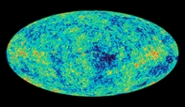Leiden Institute of Physics
Research
Physicists at the Leiden Institute of Physics (LION) conduct fundamental research into physical phenomena. They are inspired by curiosity and the desire to know more about the world in which we live. This research has always paved the way for new practical applications. These are something that the researchers at LION are always on the lookout for.
This approach goes back to the beginning of the 20th century, when Hendrik Antoon Lorentz and Heike Kamerlingh Onnes won Nobel Prizes in Physics. These turned out to be the prelude to a period in which celebrated scientists such as Paul Ehrenfest, Lorentz, Onnes and guest professor Albert Einstein contributed to several revolutions in physics and astronomy, such as relativity theory, quantum mechanics, liquefaction of helium and the discovery of superconductivity.
Theoretical and Experimental
Even at that time, there were already close links at Leiden between the theoretical physicists, who aim to understand and predict phenomena, and the experimental physicists, whose experiments in the laboratory are designed to push the boundaries of what is practicable and measurable.
There are therefore two prongs to the research at LION: theoretical physics is accommodated in the Lorentz Institute and experimental physics in the Huygens-Kamerlingh Onnes Laboratory.
Quantum World
An important area of research at Leiden is the quantum world, the counterintuitive physics of the infinitesimal. Experimentalists in the Quantum Matter and Optics Theme are working on the development of building blocks for quantum information networks, where the information carrier is light (photons). Theoreticians are developing quantum algorithms that will enable future quantum computers to perform complex calculations much faster. This will open up a whole new world for developing new types of molecules and materials.
Theoretical and experimental physicists are also researching phenomena that spin off from this quantum mechanics, such as superconductivity at very low temperatures, as discovered by Kamerlingh Onnes back in 1911. Superconductivity is used in MRI scanners and energy-efficient power cables.
The universe and life
Cosmology is a discipline where physicists and astronomers meet. Leiden theoreticians are working closely with the astronomers from the Leiden Observatory to investigate the links between particle physics, the Big Bang, the expansion of the universe, and dark energy and matter.
A third research area is the physics of Biological, Soft and Complex Systems, ranging from individual molecules, such as DNA, to entire cells. Questions about how cells perform their tasks, exchange signals, move or exert forces often lie within the domain of physics, and they can even lead to applications in the biomedical field. Leiden physicists are also researching soft materials, such as colloids for building microrobots, the physics of networks and the folding of materials.
Instrument development
Alongside the link between theory and experiments, another long-standing Leiden tradition is the development of instruments. An example of ongoing work at LION is creating different types of extremely sensitive microscopes for researching materials and phenomena. This exceptional equipment is being developed in close collaboration with the Faculty of Science’s Fine Mechanics and Electronics expertise centre, which in turn can call upon the talents of its ‘neighbours’: the Leiden Instrument Makers School (LiS), founded in 1901 by Kamerlingh Onnes.





